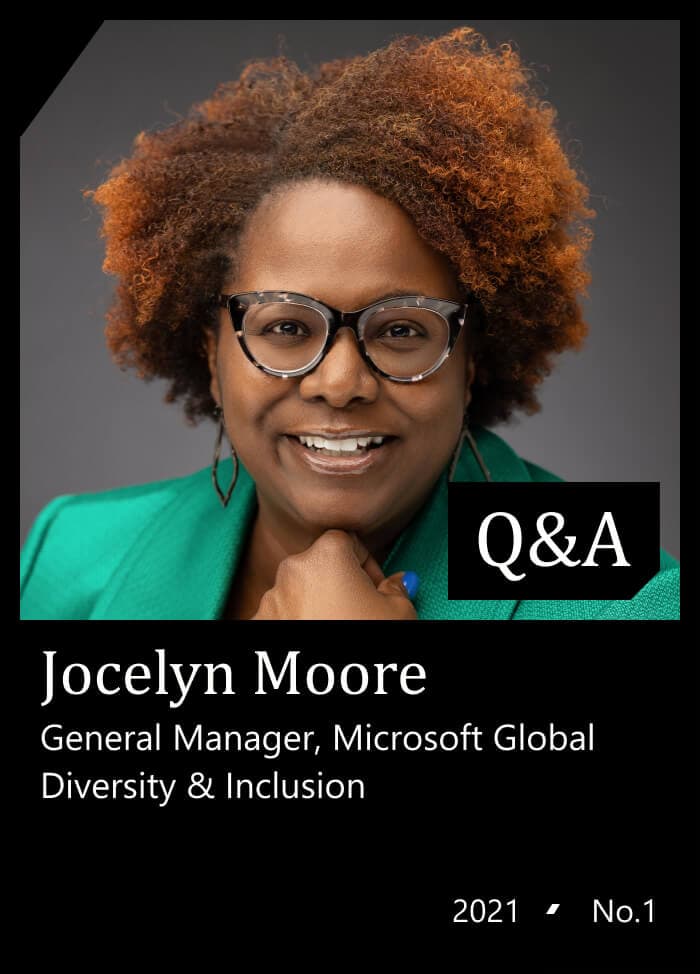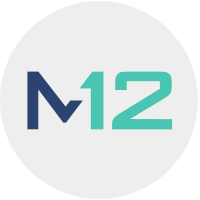Direct Line is a series of interviews with Microsoft execs with an eye toward the startup and VC ecosystem.
I sat down with Jocelyn Moore, General Manager, Microsoft Global Diversity & Inclusion and M12 Advisory Board Member, to discuss strategies for founders looking to build diverse and inclusive companies. Jocelyn has met with several of the startups in our portfolio to guide company leadership in activating their commitment to D&I.
What is your guidance for startups that are just starting their D&I journeys?
First, companies need to honestly answer the question, “Why is D&I important to us?” What are these startup leaders trying to achieve as a result of dedicating resources to the effort? How will it impact their business? Startups are scrappy and fast-moving, but it’s important to be thoughtful about this topic early on. Righting the ship later is much more difficult.
For example, at Microsoft, if we don’t have people of diverse backgrounds, skills, and experiences building our products, how do we expect to engineer technology for diverse audiences? It’s a strategic imperative. We cannot achieve our mission if we all look and dress and think the same way.
I encourage startups to think from the beginning about the kind of company they’re trying to build. Maybe you’re building fast to get to sale and cash out. But maybe you’re building for the long-term—a sustained institution. Your D&I strategy will look different based on your company ambitions.
Many companies right now are focusing on D&I because it’s a hot topic, but the danger is that in responding to the increasing sense of urgency, an organization might act performatively rather than plan and act for long-term sustained change. If you make an arbitrary decision to “do” D&I instead of an authentic commitment, your employees will see right through it. The market will see right through it—it’s brand- and reputation-impacting. Holding up a mirror and asking those hard questions is the first step here.
How can startups better source and recruit underrepresented talent?
A lot of hiring at startups happens through networks, especially when companies are really small. An early-in-career company leader might ask “who do we know who can do this job?” with the intention of solving the problem fast. Unfortunately, most people have networks of people who look and think like them, and this fast-paced hiring can have unintended consequences. All of a sudden, you might look around to see that you’ve hired all cis-gendered, heterosexual men. That’s not diversity. But creating equal opportunity in recruitment and hiring takes time.
Depending on the kind of talent you’re looking to recruit to your company, there are many different associations and membership organizations to engage, like the National Society of Black Engineers, Prospanica, Women in Technology International. To me, that’s the easy part. What’s harder is your ability to retain people of diverse backgrounds, skills, and experiences.
Before you start recruiting, consider whether people with identities that are underrepresented in your workforce would want to work at your company. Assess your current team composition, your workplace norms, and how you talk about D&I. What reputation does your company have? Is there a culture that will accept underrepresented professionals? Are there opportunities for people of diverse backgrounds, skills, and experiences to grow and develop? Depending on your answers to these questions, there may be priority issues to address before diversifying your recruiting efforts.
How should startup leaders think about their role in building a diverse and inclusive culture?
It’s important for leaders to weave D&I into the company’s foundation: the company mission, values, and vision. Prioritization in those statements will enable D&I to permeate the culture. For example, let’s say that the company value is “collaboration.” What does collaboration look like if you’re trying to be inclusive? Maybe it’s “Seeking input from others who don’t think and look like you” or “Making sure all voices are heard.”
Documenting and publishing these concepts allows people to do their job with guidance that is established at the company level. It gives employees a playbook for creating an inclusive culture instead of challenging them to realize diversity and inclusion discretely or own their own terms. Everyone may have good ideas, but those ideas might not be aligned. Foundational documentation keeps the team heading in a unified direction.
Once a company’s aspirations for a diverse and inclusive culture are documented, a founder’s role is to identify and amplify stories of things going really well—to spotlight those celebratory moments. But also to elevate the times when things did not go well, alongside a plan for how to do better in the future. There’s an incredible vulnerability in discussing those misses. People generally don’t want to talk about that. But startups need to fail fast and learn quickly.
What are your predictions for the future of D&I work?
The future of D&I work needs to become both more rigorous and allow for more flexibility. Here’s how I think about that dichotomy:
We need to continue to embed D&I workstreams and conversation into business rhythms so that D&I becomes even more normalized. Increasing business rigor makes D&I a priority and holds leaders accountable. Charting a baseline and setting goals is a universal business language. What gets counted, counts, and what gets measured, gets managed.
Simultaneously, we need to build agility and flexibility into our D&I plans. Stick with me: in 2020, we did not anticipate a global pandemic that would fundamentally reshape our work lives. How do you ensure all voices are heard when everyone isn’t in the office? How do you help managers build inclusive teams when people are working different hours?
Months later, the death of George Floyd sparked worldwide outrage. Companies were challenged to respond with their commitments and specific action plans for realizing a more equitable world. That was a critical conversation, but certainly not something that we had written into our fiscal year plans. Even as a very large company, we need to respond to what the market is telling us to do. And that initial communication is not enough; to maintain credibility, you need to sustain, you need to do the work, and you need to communicate. Showing progress and being honest about what you haven’t done well—the market values that. But maybe that wasn’t part of your annual planning cycle. Flexibility and ruthless prioritization are essential.
What are some of the ways that you’re continuing to learn as a D&I professional?
I listen to a lot of podcasts, including NPR’s Code Switch—fearless conversations about race—and Throughline, which examines the present in historical context.
I made a commitment after Microsoft’s event Include 2021—featuring global experts in academia, social change, and diversity and inclusion—to get really curious about the lived experiences of LGBTQI+ people. I’m having important conversations and learning more about the identities within these communities, and how LGBTQI+ people’s experiences are informed by every other aspect of their identity. I’ve been particularly focused on learning about the challenges that LGBTQI+ individuals often face, and how they can best be supported.
For more information about Microsoft’s Diversity & Inclusion efforts and public resources, visit www.microsoft.com/diversity.

